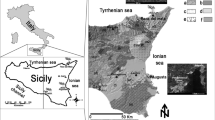Abstract
Hair has been used as a bioindicator, as a means to measure environmental and occupational contamination, and a a tool for individualization in the forensic field. Because hair is a product of human metabolic activities, its elemental content is of interest in the examination of normal (healthy) metabolism and abnormal (diseased) metabolism. Employing hair analysis, sources of environmental pollution can be identified. Some recent INAA hair measurements were carried out in our laboratory. Hair samples of six new-born infants and their mothers were collected, washed, and analyzed according to standard procedures. By 5-minute irradiation (flux 2.5×1011 n·cm−2·s−1) and gamma spectrometric analysis of hair and standard samples, elemental concentrations of Mg, Mn, Cu, Na, V, S, Al, Ca, and the halides were determined. Hair analysis of new-born infants should be of special interest, because it most likely represents endogeneous contribution. Hair assays of mothers and babies may prove to be clear mirrors which reflect observations pertaining to environmental metal mobilization and internal metabolic conditions. This work presents, along with a review of the subject, the results of a case study and identifies areas where further research is needed.
Similar content being viewed by others
References
A. K. PERKONS, R. E. JERVIS, Hair Individualization Studies by NAA, University of Toronto, 1965.
R. S. GIBSON, J. Hum. Nutr., 34 (1980) 405.
R. S. GIBSON, J. Radioanal. Nucl. Chem., 70 (1982) 175.
M. TERAI et al. J. Radioanal. Nucl. Chem., 52 (1979) 143.
H. P. S. BHANDARI, J. Radioanal. Nucl. Chem., 119 (1987) 379.
IAEA, IAEA/RL/41H, 1977.
A. S. PRASAD, Trace Elements and Iron in Human Metabolism, Plenum Medical Book Company, New York, 1978.
L. SHERWOOD, Human Physiology: From Cells to Systems, St. Paul, West Publishing Company, 1989.
A. CHATT, S. A. KATZ, Hair Analysis Applications in the Biological and Environmental Sciences, VHC Publishers, 1988.
Committee on Dietary Allowances, Recommended Dietary Allowances, 9th revised ed., National Academy of Sciences, Washington DC, 1980.
M. RAKOVIC et al., J. Radioanal. Nucl. Chem., 119 (1987) 61.
A. Z. RAUF, Hair Trace Elemental Studies for Environmental Monitoring, M. Sc. Thesis, University of Toronto, 1991.
Author information
Authors and Affiliations
Rights and permissions
About this article
Cite this article
Al-Hashimi, A. Trace elements in the hair of new-born infants by INAA. Journal of Radioanalytical and Nuclear Chemistry, Articles 179, 357–364 (1994). https://doi.org/10.1007/BF02040171
Received:
Issue Date:
DOI: https://doi.org/10.1007/BF02040171




